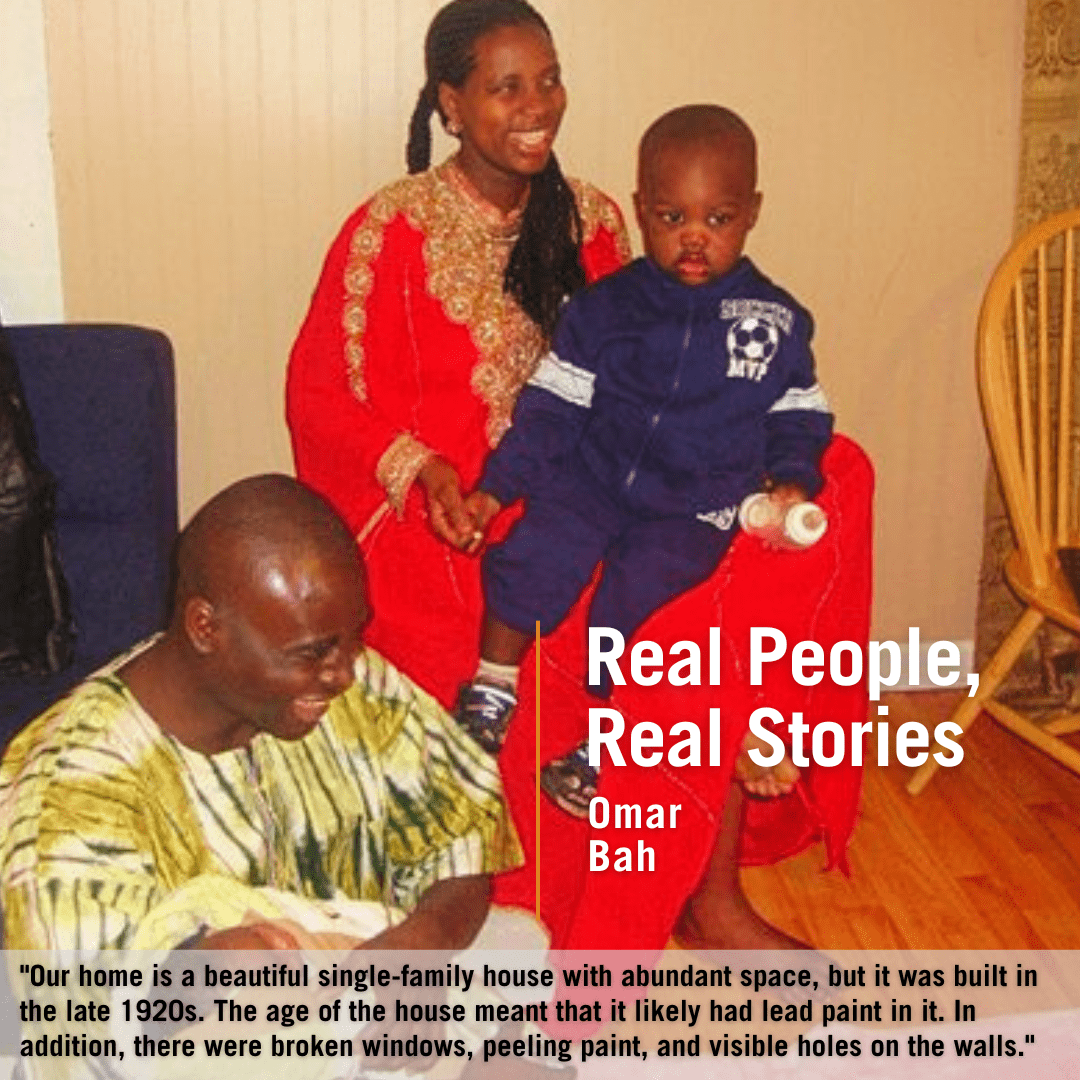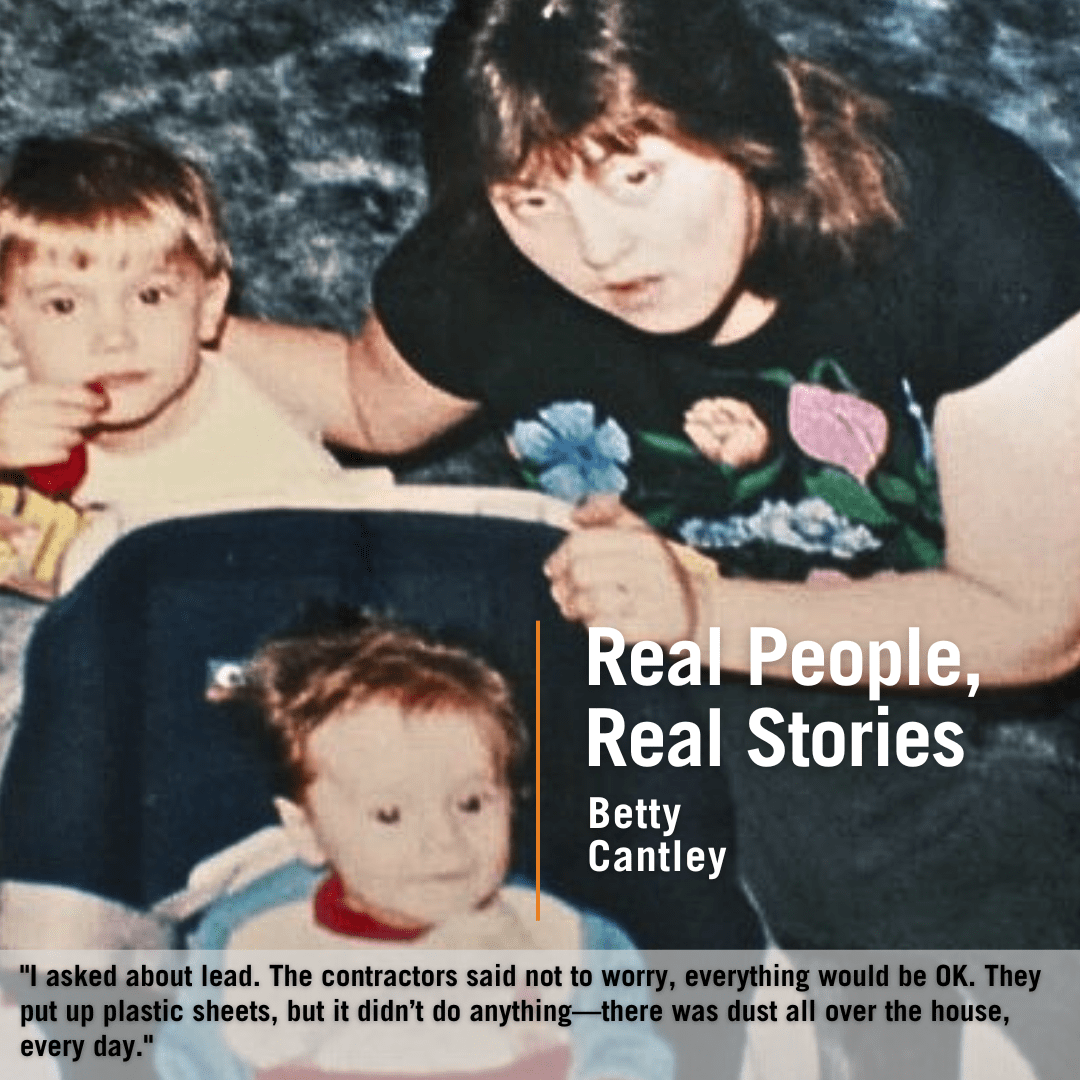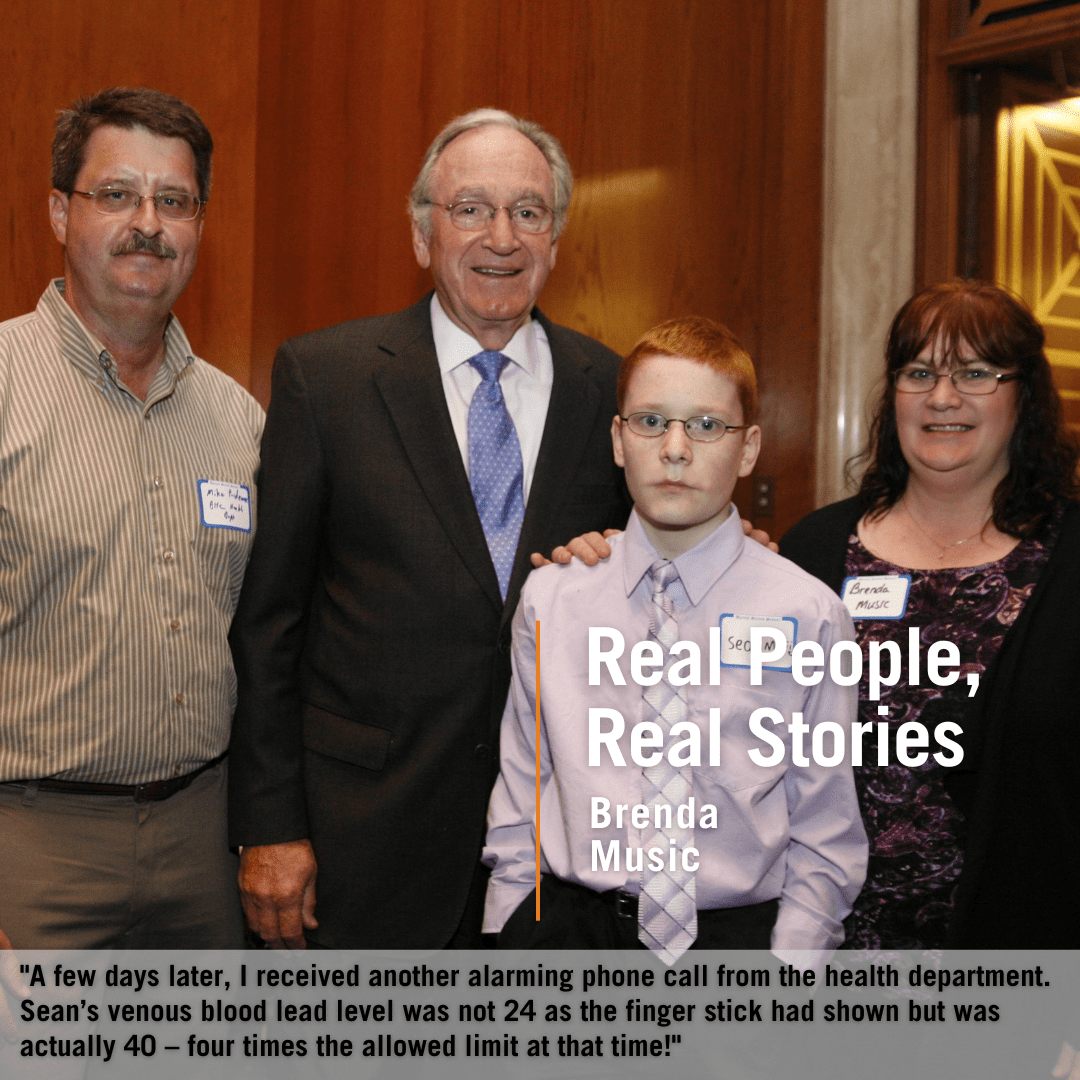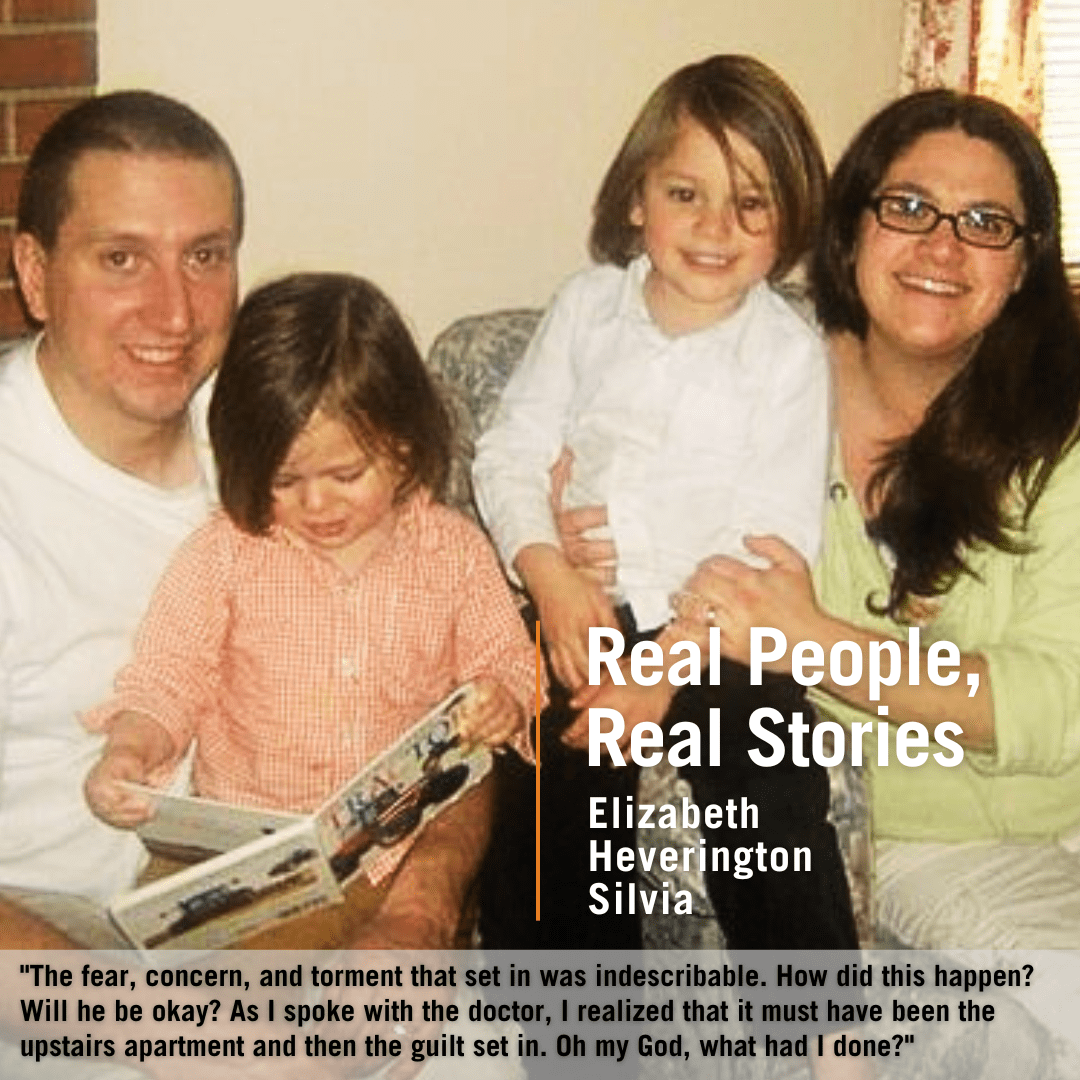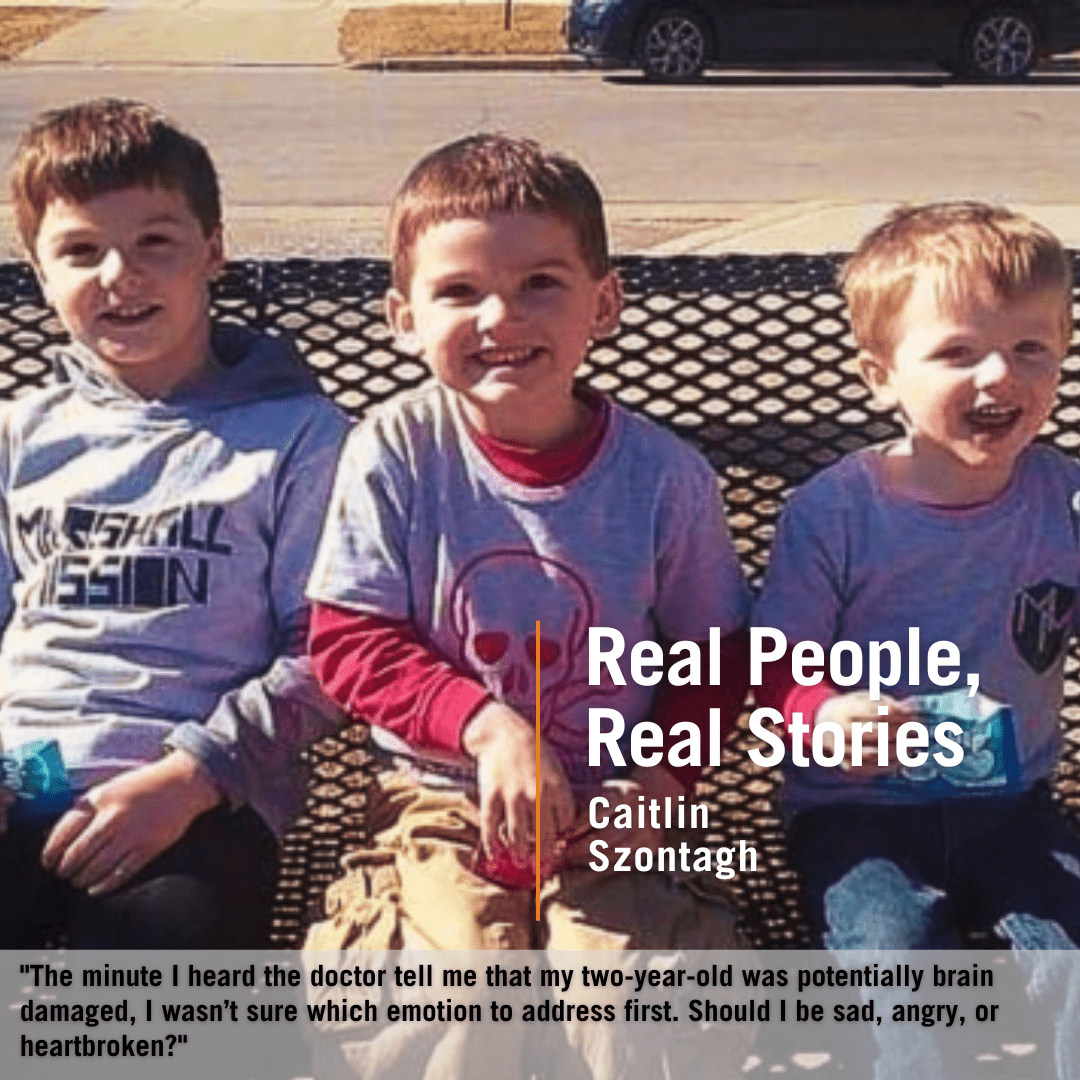Share Your Story
SHARE YOUR HEALTHY HOUSING STORY
The National Center for Healthy Housing and the Children’s Environmental Health Network want to hear from you. Have you and your family or someone you know been affected by unhealthy housing conditions?
By sharing your story, you help spread awareness and education of children’s environmental health issues. You highlight the crucial link between environmental risk factors in the home and children’s health in the minds of others, and help to put a face to these concerns. While we are particularly interested in stories that affect children, we also value and recognize the importance of stories from all age groups that shed light on various environmental health challenges. Your contributions have the potential to ignite positive change and foster a healthier future for everyone.
Sharing your experiences to others nurtures empathy and understanding in those who may not know what it is like to carry the burden of a health or developmental condition. A video or voice testimonial is important because it allows people to see and hear REAL people being affected.
Send us your stories of how your children, you, your family, or people you know or work with have been affected by lead, asthma triggers, pests, mold, carbon monoxide, radon, and other causes of injury and illness in a short story, voice interview, video, or blog post format.
Submit Your Story Here
We invite you to share your valuable stories and experiences with us by filling out our Google form. Your voice matters, and your insights can make a meaningful impact. We understand the importance of privacy, and if you prefer to stay anonymous, feel free to use a fake name and photo that doesn’t reveal your identity. However, we kindly request that in addition to completing the Google Form, you also complete the media release form, as this will allow us to feature your submission on our website.
Your participation will not only enrich our community but also help others find strength and support through shared experiences. Thank you for being a part of this empowering journey together.
Submit your story using this Google form.
For help getting started, we’ve included additional tips below. Scroll down for more information about the following topics:
How to Tell Your Story
Before you get started, please introduce yourself and include name, age, and location/state. We also understand that you may value your privacy and if you would prefer to just include your first name and state you reside in. We want this to come naturally and let your voice shine through. You don’t have to feel constrained by a specific script. We want you to speak from your heart! We’ve provided some questions to get you started in telling your story, but the questions are not required to be answered in order. We encourage you to share your story in whichever way you feel inspired. Think of this as a conversation. We understand that this may have been a long journey, and sometimes it feels that no one is listening or cares. However, we do care, and your story matters. There’s no wrong or right way to share your story.
When submitting a written story, we invite you to answer the submission questions in the Google form using at least 3-5 sentences for each one; however, these are suggested questions to give you a head start if you would like, it is not required. We recommend typing your story out on a document and uploading it as a file. If there is something you would like to share that is not in the questions, please do so.
When submitting a video/voice story, you don’t have to use a professional camera. Most smartphone cameras will do a fine job as long as there is adequate lighting. Be sure to save your file in a standard file type (like mp4) and follow the other tips below for creating a great video message. Additionally, we don’t necessarily have a specific target on length. We want you to have space to speak about your story and not feel limited. It would be best to keep it at 3-5 minutes, but we recognize that it may take longer.
We acknowledge the deeply personal nature of sharing your story and fully respect your decision if you choose to remain anonymous. Therefore, if you prefer to use a fake name and a photo that does not reveal your identity (i.e. a photo of your house), we support your choice. We encourage anonymity when submitting photos and names of children to protect their identities (such as using a alias for the child or submitting a photo where the child’s face is obscured).
If you need some help on where to start, below are some of the questions we suggest you start with.
Submission Questions
If you are currently experiencing unsafe housing conditions:
- What environmental health hazard in the home has impacted your family/loved ones? (Our definition of an environmental health hazard is a physical, chemical, or biological substance that has the potential to harm human health. An example may be mold exposure).
- What is the likely cause of the exposure to this environmental health hazard in the home? (An example could be leaking plumbing fixtures).
- What were some symptoms that you noticed (such as physical symptoms or mental/emotional stress)?
What has been the impact on your family (emotionally, physically, child’s development, any financial burdens [medical/housing costs], ability to go to work, relationships/community)? - How are you handling this situation or what do you believe are the next steps?
- What types of assistance through healthy home services (such as finding and addressing lead, mold, pests, or other hazards or injuries) are you aware of that can help you/ your family?
If you have previously experienced unsafe housing conditions:
- What environmental health hazard in the home has impacted your family/loved ones? (Our definition of an environmental health hazard is a physical, chemical, or biological substance that has the potential to harm human health. An example may be mold exposure.)
- What is the likely cause of the exposure to this environmental health hazard in the home? (An example could be leaking plumbing fixtures.)
- What were some symptoms that you noticed? (such as mental/emotional stress, ability to go to work, relationships/community, or financial health)?
- What has been the impact on your family (emotionally, physically, child’s development, any financial burdens [medical/housing costs])?
- What solutions/steps were taken?
- What types of assistance through healthy home services (such as finding and addressing lead, mold, pests, or other hazards or injuries) helped your family?
- Why do you think it’s important for continued funding of fixing homes to eliminate hazards (such as lead paint/dust, mold, asthma triggers, including pests, carbon monoxide, threats to home safety, and radon) and providing related services is important for your family and other families?
If you are a practitioner or public health professional:
- What is one story about how an environmental health hazard in the home has affected one of your patients/clients that has stood out to you the most?
- What was the likely cause of the exposure to this environmental health hazard? (Our definition of an environmental health hazard is a physical, chemical, or biological substance that has the potential to harm human health. An example could be leaking plumbing fixtures.)
- What were some symptoms that affected the individual(s) (such as mental/emotional stress, ability to go to work, relationships/community, or financial health)?
- What solutions/steps were taken? Were you able to provide assistance/support?
- How did it make you feel to hear about their story?
- What types of assistance through healthy home services (such as finding and addressing lead, mold, pests, or other hazards or injuries) helped the family?
- Why do you think it is important for continued funding of fixing homes to eliminate hazards (lead paint/dust, mold, asthma triggers, including pests, carbon monoxide, threats to home safety, and radon) and providing related services is important for your families?
Tips for Conducting Interviews
Here are some tips for conducting your voice/video interviews to keep in mind:
- Relax and be yourself! Friendly reminder that this interview is just a conversation about your experience.
- Interviewers, trust your instincts, make room for follow-up questions such as “How did that make you feel?” or “What were you thinking at that moment?”
- Grab a partner who will be your interviewer and have them interview you about your story. Find a comfortable spot and record using your phone or any device you may have.
- Look over the questions before the interview and prepare yourself. Sometimes, it’s best to get an idea of what’s to come and what you’re going to say beforehand.
- Make sure to do a quick test run to see if the sound is clear and if there is enough storage space before starting.
- You don’t need professional lighting, but make sure there’s enough light and that your face isn’t cloaked in shadows.
- Minimize other background noises if possible.
- Speak clearly.
- We prefer the video to be in horizontal format, but it is not required.
Instructions for Submission
When you are ready to submit your video/voice file, navigate to the section “Submit Here.” You will be directed to a Google form where it will ask for your information, provide space for you to submit your files, and ask for your consent to share your story across our platforms.
For uploading your photo, upload your image to “Include a photo” as a PNG or JPEG file. The max file size should be 100 MB.
For written submissions, please upload your document to “Upload your short story here” as a Word document or PDF only. The max file size should be 100 MB.
For video/voice submissions, upload your file to “Upload your video interview here” or “Upload your voice interview here” as an MP4 video or audio file only. The max file size should be 100 MB.
You do not have to upload a file with all three options. Choose the option you feel most comfortable with.
What Do I Do Now?
Thank you for submitting your story. Your actions help foster public support for further research, vital protections of health and housing, and investments in children’s health.
Making these stories available to policymakers helps them develop a personal commitment to healthy housing and understand how substandard housing issues have directly affected their constituents. If you would like to continue to get involved and learn more ways to engage in advocacy to protect children from environmental health hazards in the home, you can do the following:
- Join the National Safe and Healthy Housing Coalition.
- Volunteer to meet with your member of Congress or participate in the NSHHC’s Hill Days. If this is something you’re interested in, you can read about meeting your member of Congress here or email Sarah Goodwin at sgoodwin@nchh.org.
- Be sure to follow us on social media!
-
- Facebook: @CEHNet | @HealthyHousing
- Instagram: @cehnetwork | @nchhorg
- LinkedIn: CEHN | NCHH
- Twitter: @CEHN | @NCHH
- YouTube: @CEHN1 | @healthyhousing
Frequently Asked Questions
COMING SOON
Disclaimer, Terms, and Conditions
The National Center for Healthy Housing (NCHH) and Children’s Environmental Health Network’s (CEHN) have set out terms and conditions for you to review upon submission. You will also be asked to agree to NCHH and CEHN’s media release statement upon submitting your story in the Google form above.
If you do not agree with these terms, do not submit your story to NCHH and CEHN.
By submitting your story, you confirm that you have read, understood, and agree to the terms described in the Google form.
Real People, Real Stories
Below are a few of the stories we’ve received so far.
Resources
Five Things You Can Do:
- Meet Your Member of Congress Locally [url]
- Join the Find It, Fix It, Fund It Action Drive [url]
- Share Your Story [url]
- Encourage Others to Join the Coalition [url]
- Connect on Social Media [url]
Blog Posts:
NCHH and Coalition Campaign on Capitol Hill (May 6, 2016) [url]
NCHH Takes to the Hill (March 25, 2015) [url]
Latest page update: August 29, 2023.
